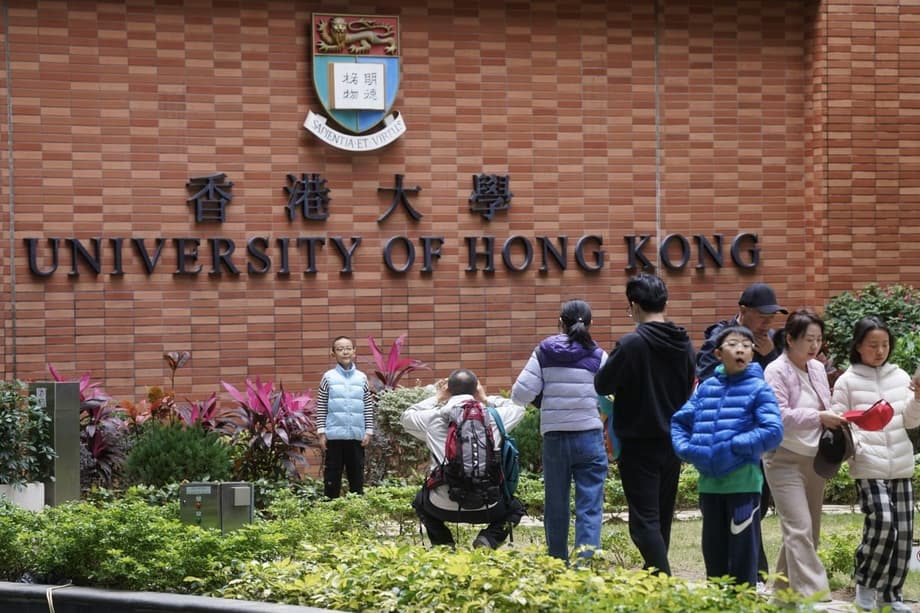A milestone for Hong Kong higher education
The University of Hong Kong has returned to the top of the QS Asia University Rankings, taking first place in the 2026 edition and ending a 15 year wait to reclaim the regional crown. The result, based on assessment of more than 1,500 institutions across 25 education systems, places HKU just ahead of Peking University. Nanyang Technological University and the National University of Singapore share third.
It is a breakthrough year for the city. For the first time, five Hong Kong universities sit inside Asia’s top ten. HKU leads at number one, the Hong Kong University of Science and Technology is sixth, City University of Hong Kong and the Chinese University of Hong Kong are joint seventh, and the Hong Kong Polytechnic University completes the group at tenth. The showing highlights Hong Kong’s concentration of research focused and globally connected campuses.
QS, the ranking compiler, credited Hong Kong’s progress to a model anchored in internationalisation, research strength and targeted policies to attract talent. The organisation said smaller systems can outperform larger ones when strategy is clear and consistent. Local performance also improved broadly, with many institutions rising compared with last year.
The new table reshapes the regional order beyond Hong Kong. Fudan University is fifth, and Tsinghua University is ninth. The result follows a year in which HKU placed second in Asia, then moved up one place to reclaim the top spot it last held in 2010. That context helps explain the scale of this year’s jump for the city.
How QS ranks universities in Asia
QS evaluates Asian universities using a blend of reputation, research power, teaching resources and international engagement. The Asia methodology is tailored for the region and places extra weight on cross border activity, such as exchange, as well as the depth and reach of research networks.
Indicators at a glance
- Academic reputation
- Employer reputation
- Faculty student ratio
- International research network
- Papers per faculty
- Citations per paper
- Staff with PhD
- International faculty
- International students
- Inbound exchange students
- Outbound exchange students
In practice, Hong Kong institutions tend to excel in international faculty and student mix, student mobility and research productivity relative to campus size. That pattern, visible in both public data and institutional disclosures, aligns well with the indicators QS applies in its regional table.
The 2026 edition covers 1,529 universities and includes more than 550 first time entrants, reflecting the scale of growth in Asian higher education. A full explanation of the methodology sits on the QS website, including weights for each indicator and the definitions used for data collection. To see the latest table, visit the QS Asia University Rankings.
Which Hong Kong universities made the top 10
Five Hong Kong institutions are now in Asia’s top echelon. Their positions in the 2026 list are as follows:
- 1. The University of Hong Kong (HKU)
- 6. The Hong Kong University of Science and Technology (HKUST)
- =7. City University of Hong Kong (CityUHK)
- =7. The Chinese University of Hong Kong (CUHK)
- 10. The Hong Kong Polytechnic University (PolyU)
The other places in the top ten are filled by Peking University at two, Nanyang Technological University and the National University of Singapore in joint third, Fudan University at five and Tsinghua University at nine. CityU’s move from tenth last year to joint seventh, and HKUST’s rise to sixth, underline the breadth of the local upswing.
Why Hong Kong surged now
Hong Kong’s advance reflects both long running strengths and newer initiatives. The city has doubled down on international recruitment of faculty and students, while also expanding funded research and lab capacity. Policies to attract global talent, including the Top Talent Pass Scheme launched in late 2022, have raised inflows of experienced researchers and graduate students. English medium instruction across most campuses, deep links to global industry and proximity to the Guangdong Hong Kong Macao Greater Bay Area create a strong platform for collaboration.
Institution level results help explain the jump. City University of Hong Kong reported perfect scores in several indicators, including International Faculty, International Students, Outbound Exchange Students and Inbound Exchange Students, and topped Asia in three of those categories. The Hong Kong University of Science and Technology received a Research and Discovery Champions award that recognises strong publication records in leading journals and research cited by patents.
The Asia rankings emphasise internationalisation and research outputs. Hong Kong universities are structured around those strengths, with compact campuses, active exchange programs and an outsized volume of papers per faculty member relative to their size. These characteristics translate into higher scores where the regional methodology places weight.
Campus leaders react
University leaders in Hong Kong framed the outcome as recognition of sustained investment as well as a springboard for the next phase of growth.
Professor Xiang Zhang, President and Vice Chancellor of HKU, thanked the university community for its role in the result.




